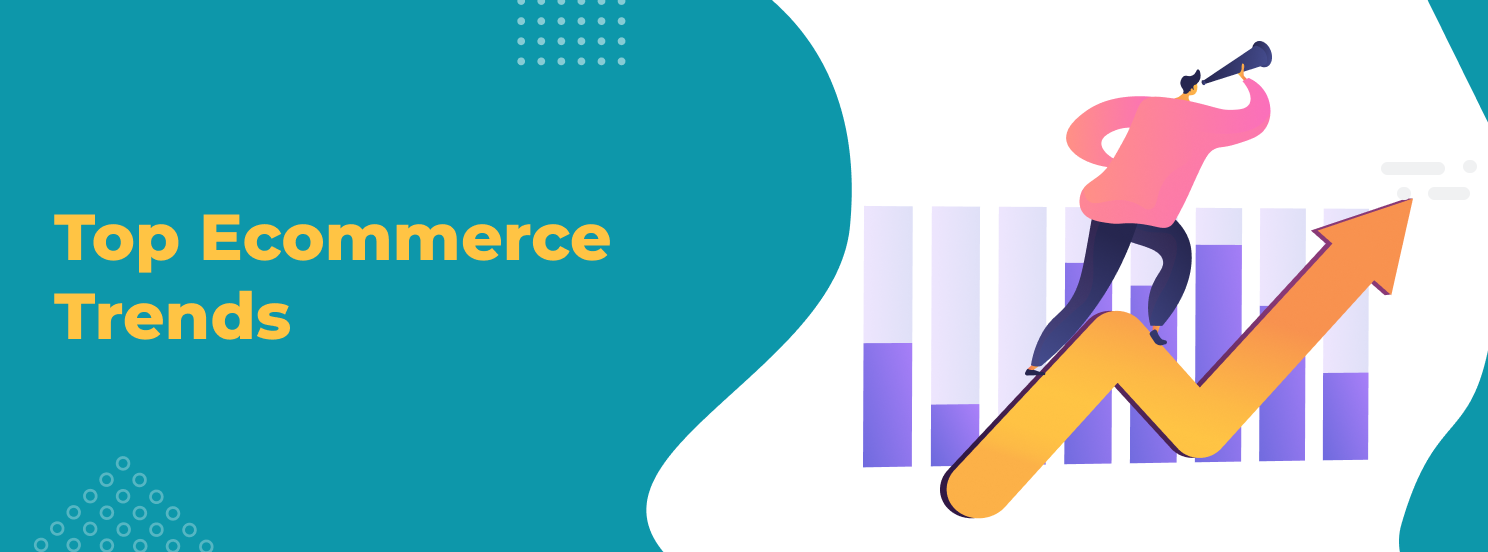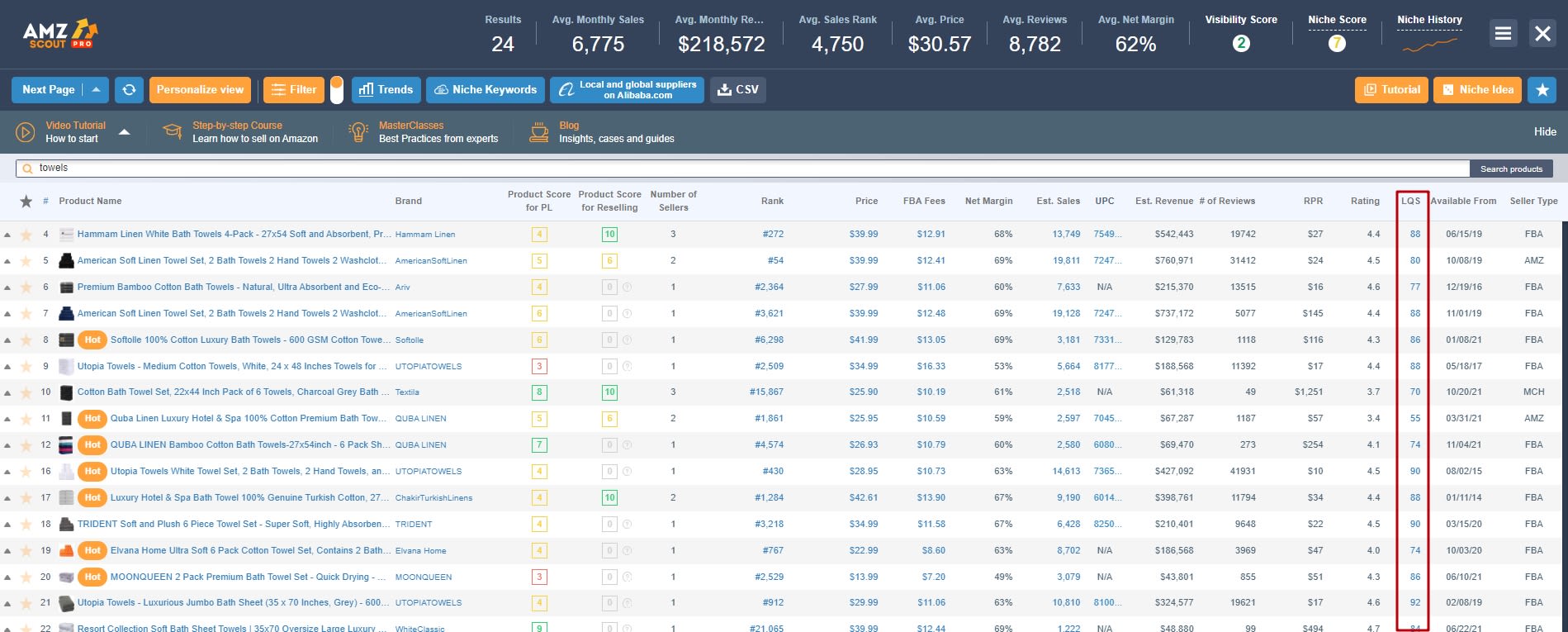
Top Ecommerce Trends of 2025
Year after year, eCommerce continues to grab a larger share of the global retail market. If you want to make the most of this increased demand, you need to stay on top of the latest trends. Doing so will ensure you are best positioned for success.
Top eCommerce Trends for 2025
- Selling on Marketplaces
- Highly Optimized Storefronts and Listings
- More Personalized Marketing and Products
- Multiple Payment Options
- Streamlined Mobile Shopping Experience
- Seamless Online Purchases
- B2B Ecommerce
- Chatbots and Conversational Marketing
- Video Marketing
- Faster Deliveries
- Omnichannel Strategies
- Consumer Focus on Sustainability
- Augmented Reality and Virtual Reality
- Subscription Models
- Increased Use of Voice Search
- Ecommerce Trends Frequently Asked Questions
Below, we will walk through the top 15 latest eCommerce trends you should know in 2025.
Top eCommerce Trends for 2025
1. Selling on Marketplaces
Like it or not marketplaces are here to stay. Online retail giants like Amazon and Walmart provide unparalleled selection and convenience which is why they dominate the market and many shoppers turn to them for the bulk of their shopping. If you want to tap into eCommerce’s vast potential in 2025, you need to be selling on marketplaces.
Selling on marketplaces affords several advantages over selling through your own site. You get a built-in audience which can lead to more exposure for your products and you don’t need to worry about the technical aspects of maintaining a site and securing it from web threats.
2. Highly Optimized Storefronts and Listings
As marketplaces become more popular, competition amongst sellers is increasing. Because of this, it is essential to optimize your product pages. Doing so helps you differentiate yourself from the competition to generate more sales.
Many sellers, particularly those on Amazon, rely on software to help improve their listings. For example, with the AMZScout platform, you can use the listing quality metric (LQS) to find the best product pages to use and inspiration. You simply need to find the products that you want to research on Amazon, open the PRO Extension and the LQS along with other key sales metrics.
Sellers also use the software to find relevant keywords. With AMZScout’s Keyword Search tool, you can look up any phrase to see how many searches it gets on Amazon and which products currently rank for the term.
3. More Personalized Marketing and Products
Today’s customers have come to expect personalization when shopping online. They want to see products related to their needs and are more likely to complete a purchase when the business makes an effort to give them individual attention.
E Commerce is unique in that it is easier to personalize the shopping experience when compared to traditional retail. A grocery store or other big-box retailer can’t display different products to everyone that walks through the door. But, eCommerce sellers can customize each individual shopping experience through product recommendations, curated feeds, and highly segmented marketing.
4. Multiple Payment Options
Buyers expect the ability to choose their preferred payment method when completing an order. Businesses that provide multiple payment options can reduce abandoned carts and increase trust in their brand. Beyond the standard debit and credit card options, you should look to offer PayPal as well as mobile wallets such as Apple Pay.
5. Streamlined Mobile Shopping Experience
Like prior years, mobile commerce is one of the most important eCommerce trends in 2025. Over half of all web traffic comes from mobile devices. This only continues to grow as more and more consumers are shopping using mobile smartphones.
Successful sellers need a mobile-optimized eCommerce site if they want to convert mobile shoppers. This means fast load times, simple navigation, and a friction-free checkout experience.
6. Seamless Online Purchases
With increased competition, it is becoming even more important for eCommerce sellers to streamline the shopping experience. This includes not only the ability to check out quickly from your eCommerce site but through other platforms as well.
Social commerce has grown rapidly and popular platforms such as Instagram and Facebook make it easy for shoppers to purchase items directly from the platform. Merchants need to take advantage of these new sales channels by syncing their product catalogs to the platforms to meet their customers where they are and remove steps from the buying process.
7. B2B Ecommerce
Business-to-business (B2B) commerce is a massive industry. In fact, it is much larger than business-to-consumer (B2C) commerce. It is only in recent years that B2B sellers started to shift their focus away from traditional commerce to eCommerce channels. Outdated in-person sales processes are now being replaced by B2B marketplaces and websites.
This trend will continue to grow in 2025 and beyond. It is being spurred largely by changes in technology. Vendors now have the tools to support their massive product catalogs while still providing the detailed product information and personal attention expected by B2B buyers.
The trend is also influenced by a shift in the demographics of B2B buyers. Younger generations, who are more accustomed to online shopping in their personal lives, are moving into decision-making roles. Used to the speed and convenience of buying online, eCommerce is more preferable to them than having an in-person meeting or talking to a rep over the phone.
8. Chatbots and Conversational Marketing
Chatbots have become a crucial part of many eCommerce sites. These automated solutions offer shoppers a form of “self-service” support, enabling them to get answers to their questions without the need for human input. This not only speeds up your customer service response times, it also reduces costs for your business. Getting a chatbot is more affordable than having to hire staff to work around the clock.
Chatbots are also great for a new form of marketing called conversational marketing. With this dialogue-driven approach to marketing, chatbots can engage customers in real-time to give them more information about products. Customers can communicate with the bots when and how they see fit, leading to a better overall experience.
9. Video Marketing
Videos are an effective way to attract new customers. They are more engaging than traditional product photos and allow you to show off your items in ways not possible with a picture. Videos are useful in various places across your site including your homepage, about page, and of course product pages.
Videos are also great for engaging your audience on social media and generating high click-throughs and conversions for advertisements. You can create videos in-house whether you have a dedicated team or go about the filming process yourself. You can also leverage your audience to have them create their own videos showcasing your products. This user-generated content resonates with potential buyers and can lead to a strong boost in sales.
10. Faster Deliveries
Consumers are continually expecting speedier deliveries. Whether it’s food or a new piece of clothing, customers expect their orders to arrive swiftly and without issue. If your estimated delivery date is too slow, you will likely lose the customer. Therefore, it is important to take advantage of third-party logistics providers (3PLs) and other supply chain innovations to ensure fast shipments.
Selling through marketplaces eliminates much of the challenges of speedy deliveries. For example, if you use Amazon’s FBA service you can leverage their logistics network to offer Prime shipping for all your orders. This will ensure that customers get their orders in two days or less.
11. Omnichannel Strategies
In today’s world of eCommerce, selling through a single channel is not enough. Competition is fierce and there is no shortage of places people can go to find the products they need. It is essential to establish your business on both major marketplaces and your own direct-to-consumer site.
It is also important to market your business through multiple channels. It is unlikely that you will reach all of your audience through a single medium. You need to market through Google, social media, as well as on marketplaces like Amazon to get in front of your target customers.
12. Consumer Focus on Sustainability
Sustainability is an emerging eCommerce trend in 2025. More customers are reviewing how a product is sourced to make sure that it and its packaging are eco-friendly and created ethically. They are also looking at businesses to see if they engage in sustainable practices like reducing their carbon emissions and donating to sustainability focus organizations.
By incorporating sustainability into your business, you help serve the greater good while also aligning your values with a wider range of customers. This can drive growth for your business and increase your reputation among consumers.
13. Augmented Reality and Virtual Reality
Ecommerce comes with many advantages but it has yet to match in-person shopping when it comes to getting a sense of a product. When you shop at a physical store, you get to see items in person and can feel them with your own hands. This allows customers to buy with more confidence.
However, eCommerce technology is quickly changing this dynamic. Specifically, the emergence of augmented reality (AR) and virtual reality (VR) technology. These tools aim to recreate the in-person retail experience for online shoppers. Customers can use them to visualize and try out products from the comfort of their homes.
These features are particularly popular in the jewelry and fashion industries where customers can get a visual representation of what a design looks like on them. Or in the furniture industry where you can see how a specific piece looks and fits into your living space.
14. Subscription Models
Subscription models are gaining popularity as a way for businesses to increase revenue. When a customer enrolls in a subscription product, they automatically make recurring purchases again and again. If your product is high quality, people can keep their subscription active for months or even years. By adopting this business model, you can turn what might have been a one-time buyer into a loyal long-term customer.
15. Increased Use of Voice Search
Voice search is becoming more popular among eCommerce shoppers. This trend is being driven by improvements to voice assistant apps on mobile devices and smart home devices like Amazon Alexa. These devices are getting better at picking up on the meaning of searches and returning relevant results.
Voice search functions differently from text-based search so eCommerce businesses need to be aware of the differences in order to get their products to show up for relevant customer searches. You should optimize your website and product descriptions to reflect the types of information used when speaking a query instead of typing it.
Ecommerce Trends Frequently Asked Questions
What is an eCommerce Trend?
eCommerce trends reflect the current nature of the online shopping market. Trends can involve everything from the way customers shop to the tools that companies use to manage their business.
What are the Most Recent eCommerce Trends?
The most recent eCommerce trends are centered around emerging technology. AI and machine learning allow you to personalize the customer experience at scale and AR and VR open up more engaging forms of marketing.
What is the Future of eCommerce?
The future of eCommerce is set for continued growth. More consumers are turning to online channels to purchase goods and improvements to eCommerce tech are making it easier for new sellers to get started.
Is eCommerce Still Profitable in 2025?
The eCommerce industry is more profitable now than ever before. Competition is tougher, but businesses that are able to establish themselves in the market can benefit from significantly increased demand.
Conclusion
In summary, the key eCommerce trends to watch in 2025 center around providing a better customer experience and adopting emerging technologies. Sellers that do this can capitalize on the rapid growth of the eCommerce market to drive more sales for their business.







